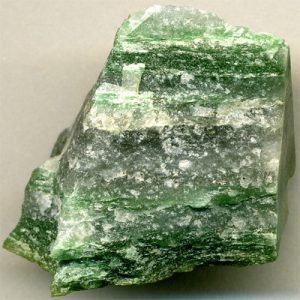Greenlandite
Greenlandite has been called “The Oldest Gemstone on Earth” it had been created is about 3.8 billion years old – one of the earliest formations on the planet because it has been established that the geological environment in which! Greenlandite is found only in Greenland and so is aptly named, and may be considered the official “Country Stone” of Greenland. It had been found in the 1960’s during a survey for the iron that is large, Isukasia, north of Nuuk and has subsequently been found in several locations in the Godhabsfjord area of Greenland.
Greenlandite is a variety of the mineral Fuchsite which will be a variety of Muscovite and consists of Quartzite mixed with Fuchsite. Fuchsite is green that is colored its chromium (Cr) content which gives Greenlandite its rich and stunning light to dark green colors. It is similar to Adventure that is green Quartz usually has richer, deeper greens.
| Crystallography: | Quartz: Trigonal – Trapezohedal; Muscovite: Monoclinic – Prismatic |
| Crystal Habit: | Muscovite: Crystals tabular to columnar, pseudohexagonal or diamond-shaped, to 4.5 m and 77 t. As stellate aggregates, plumose, globular; scaly, granular, compact massive. |
| Twinning: | Muscovite: Composition plane [001], twin axis [310], forming six-pointed stars. |
| Cleavage: | Muscovite: [001] Perfect, partings on [110] and [010] |
| Fracture: | Muscovite: Laminae, Flexible and Elastic |
| Tenacity: | Muscovite: Tough |
| Hardness (Mohs): | Muscovite: 2.0 – 2.5; Quartz: 7.0 |
| Density: | Muscovite: 2.77 – 2.88 (g/cm3) |
| Luminescence: | Muscovite: None |
| Radioactivity: | Not Radioactive |
| Color: | Muscovite: Light to dark Green, Black impurity streaks |
| Transparency: | Muscovite: Opaque |
| Luster: | Muscovite: Vitreous to Pearly or Silky |
| Refractive Index: | Muscovite: 1.552 – 1.616 Biaxial ( – ) |
| Birefringence: | Muscovite: 0.0340 – 0.0420 |
| Dispersion: | Muscovite: Weak; r > v |
| Pleochroism: | Muscovite: Weak |


